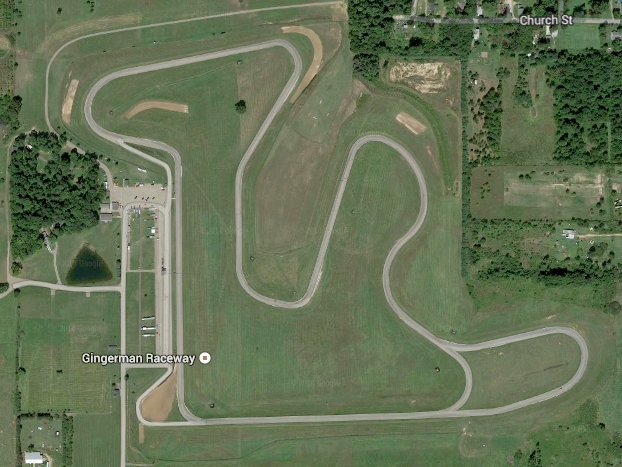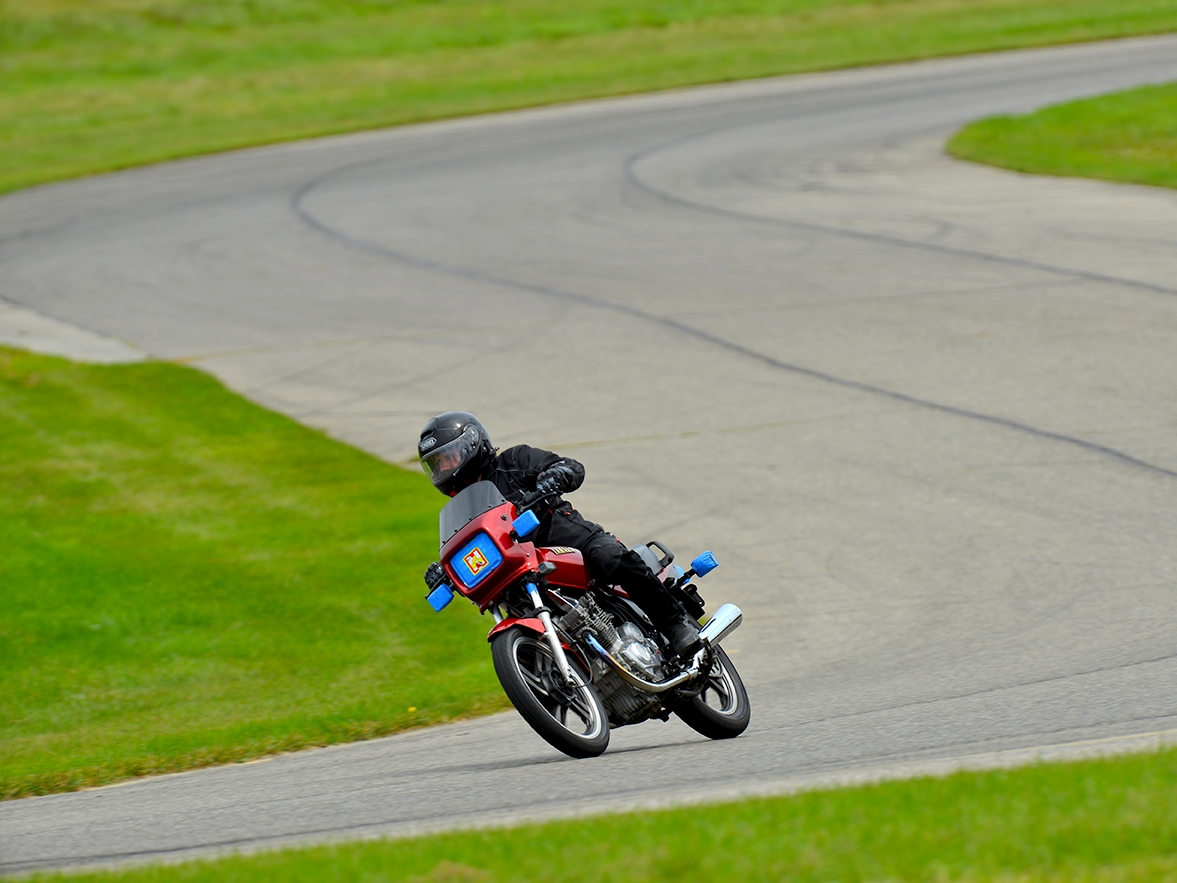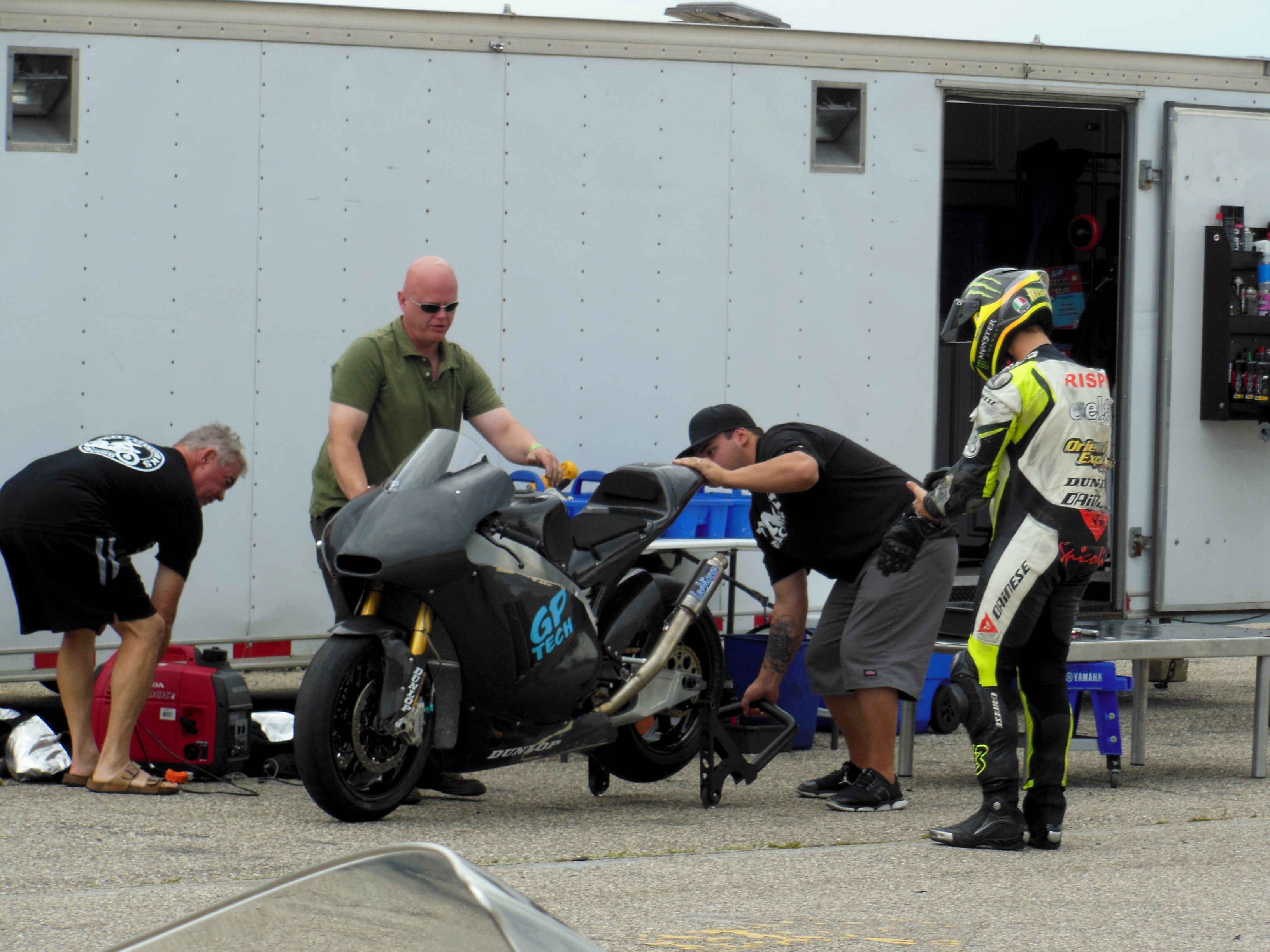Our FTC disclosure's magnum opus awaits here. The following article was last updated on Oct 19, 2025 ...
Track Day: A Beginner's Perspective
Being a beginner at anything is a rush in and of itself. Whether you're trying something that you've always wanted to do or feeling spontaneous about an unexpected opportunity, getting started can trigger euphoria so intense it ties a knot in your gut. If you're familiar with this sensation, consider yourself lucky. You have an active lifestyle. Your world is in motion.
For me, one experience at Gingerman Raceway perfectly encompasses that reality.
It's the summer of 2013. A friend invites me to attend what will be my very first track day beginner session. Being new to the idea, I have zero concept of what to expect so of course my preparatory gears start turning. How much does it cost? What are the requirements? After all is said and done, will I become a professional racer, ready to run twenty laps around Nürburgring?
Calm down. Gather information. Follow through.
What I learn is that a typical track day requires you to wear a full-face helmet, spine protector, armored racing leathers/gloves and reinforced above-the-ankle boots. Keep your motorcycle in stellar working order: eliminate any leaks, fasten all scatterable parts with safety wire and run tires no more than two years old with at least 50% tread remaining. These demands are more than sensible because smaller, privately owned tracks pay in upwards of $25k annually for insurance. In order to keep them running, we as riders must show our respect by taking precautions.
“Track day beginner nerves fade fast as the laps add up. With clear tips and calm coaching, anyone can ride smoother and have more fun.”
This particular track day beginner event, however, has milder stipulations. Populated with an even balance of novice, intermediate and advanced riders, Motoworks organizes everything to attract entry-level types such as myself. They allow textile riding suits (less expensive), don't require safety wire and provide classroom instructors to help us learn the ropes.
Having paid the signup fee online, I follow a link from my confirmation email, which provides more detail as to what I need to do next. That means man shopping. I slow-cook an itemized list of tax-deductible purchases and demolish one month's pay without batting an eye.
Crammed into a one-car garage with all of my other bikes, I clean and polish, tighten and torque, balance and replace. She's ready. I'm ready.
Once Upon a Night Before Track Day
This event begs for arrival the night before, the reasons being too numerous to count.

For starters, there's a track walk. Everybody hops into the back of a pickup before slowly navigating the length of the course. They explain curves, note considerations and give techniques their first mention. I don't remember it being mandatory but as an introduction it provides a lot. The track run has a downside: it makes getting to sleep difficult because you're amped to ride!
Another good thing about arriving one night ahead is that sometimes the organizers host dinner for track day beginner riders. Everyone in attendance meets, eats and drinks while catching up with one another. If you know anything of the motorbike community, you know that you'll likely run into a familiar face.
Lastly, there's sleep for any track day beginner. Never will the butt crack of dawn be more welcome in your life than on the morning of a track day. Be that as it may, it's better to have a full night's rest than otherwise. I don't want to wake up at 4 a.m. and travel two or more hours before attempting to piece my focus back together in time for bike inspection. Give yourself the ease of mind that comes with waking up, driving (or riding) a mile to the track and watching the sun rise.
Find Us at the Paddock
I don't know how other tracks operate, as I'm still quite new but Gingerman has an entry gate. I get off my bike, show them my printed ticket and identification, put on my wristband and ride in as a track day beginner. Once through, I continue on to the (prepare for a new term) primary paddock. The primary paddock is a general-access area where riders can claim space to set up shop.
In finding my friends, I notice that they've rented an optional quick-build roof structure. That comes in really handy, as there is a bit of rain. It also blocks out wind.
Rested and ready, it's time to park and pull my luggage from the bike. Most riders will haul their bikes on a trailer because it allows them to prepare everything at home. I don't have a trailer (yet) so I take pleasure in heading out on two wheels.
Now, let's talk tape for the track day beginner. At a track day, cover anything on your motorcycle that can be shattered with tape. The only tape that is both strong enough to endure the event and easy to remove afterward is painter's tape. You'll want to use it to jacket your turn signals, reflectors, headlight and speedometer. If it's easy to do so, consider the removal of these parts as an alternative.
Someone explained to me that we also cover our speedometers because they're a distraction. As a track rider and track day beginner, the speedometer is of no use. Even the tachometer is a bit of a moot point, depending on your bike. Yamaha designed my bike to be railed on beyond the 9k rpm marking (as did many makers of standard and sport bikes). I made sure to do so regularly throughout the afternoon. ;-)
That Track Day Beginner is Missing Some Bolts
Safety-minded and ready to ride, I coast into the inspection line, where an elderly man of obvious understanding gives 'er a once-over. I'm simultaneously impressed and upset when he points out to me that one of my engine-mounting bolts is gone!
It must have flown off during my commute from Chicago. This can make or break my trip but he continues by noting that five other mounts hold the engine in place and that I pass inspection. Words can't express.
At this point, I'm starting to get antsy. This is not the part where "everyone gets on the track and we all ride as fast as we want in whatever direction we like," but I figure you probably already know that. It's time to decide which group I'm going to ride in and which subgroup I prefer in terms of speed.
If you're a first-timer, you're riding in the novice group as a track day beginner. This isn't open to discussion. At no point in the day may you upgrade to intermediate (and certainly not advanced). No, for the novice track rider such as myself, a full third of the day is spent learning and the other two-thirds gaining experience. I'm totally fine with that and must state that anybody who isn't shouldn't step foot near a motorcycle.
Organizers divide all primary groups into five subgroups. Group one is for those who want to wring out the throttle, whereas group five belongs to the relaxed, slow-goers. Gauging my aggression, I feel group three is a decent starting point (you may change in between sessions).
The advanced riders line up on pit road, a small entryway that allows riders to gain enough speed to safely merge onto the track. As their engines warm, they set the tone. The intermediates join us in tower one, where they attend only the first of what are many classes for novice riders.
Track Day Beginner Class Is in Session
A man whom I can only describe as having the physical features of Joseph "Joe" Cabot from "Reservoir Dogs" politely welcomes us to the room and invites us to seat ourselves. He then continues on to explain the class itinerary while referencing the possibility of light rain. Lesson one kicks off almost immediately and I listen carefully to gather the basics.
They tell us not to pass (yet). Our first twenty-minute time slot will be mellow at most so that we get a feel for the track and learn what lines to target. Also, our designated instructor will make sure to point out where the corresponding towers are so that we can locate flags.
The flags (green, yellow and red) let us know the current safety conditions on the track. Green means "have at it," yellow "proceed with caution," and red might as well mean "you don't want to see this." To the novice track day beginner, a checkered flag means "get off the track so actual riders can do something" (kidding).
The staff instructs the intermediates to go ahead and prepare for their first twenty minutes as the initial advanced session winds down. The novices, glued to the dry-erase board, continue processing terminology and policies. To observe all of that information and retain it on the track is going to require great discipline but I'm up to it.
Eventually they give us the okay to leave for a second cup of coffee while we sign up and provide an address to receive photos they are taking of each group. I can attest that not only are the photos of the highest quality, you can actually see yourself getting better as the day goes by. I'm not sure why but actually attaining these photos is a little bit difficult, so I think next time I'll ask about that.
Start Your Engines
Twenty minutes later, our moment arrives! All of the sub-groups line up in their respective order and, flags green, one group enters the track every fifteen seconds. The delivery is quite a graceful process and actually very low stress. Everyone is instantly having fun and our instructors pay close attention to what we're doing, both right and wrong. I can tell this is going to be a life-changing experience for a track day beginner.
We spend our first twenty minutes "finding the line" (the best route through each corner). Some curves at Gingerman will fool you by sharpening or expanding unexpectedly. What's more, if you're outside of the preferred line, you have to know how to find your way back in.
Next, we spend another twenty minutes in one gear. On my six-speed Seca, I opt to rail on third, which works out nicely. I'm only just learning about my little bike being so responsive and durable!
Round three belongs to the bump shift. Our sessions are climbing in speed so much that group three (my group) overtakes group two. The bump shift only adds to that. Completely new to this, I hear an explanation that if you don't do it correctly, you can damage your transmission. Hence, instructors carefully teach us how to do so without harming the bike.
A bump shift allows you to change gears without using your clutch. By applying light pressure to the shift pedal while maintaining acceleration, you can roll the throttle forward (decelerate) for a split second and continue to shift as if the clutch weren't engaged. This technique makes racing much more efficient.
For our fourth session … leaning through a turn. By placing your seat diagonally right into the crack of your @$$, you can control a bike without using your handlebars whatsoever. This also happens to be what will in many cases bring a bike much lower to the ground but because you're gyroscopically balanced, the bike floats through as if all is normal.
One final group run takes place for individual observation only. After that, instructors critique us in person, including pros and cons and suggestions to better ourselves. I learned more in these moments than I have in years, I must say.
You're Free to Fly
From this point on, everyone is as familiar with the track as they need to be. The friend who invited me joins us for a couple of novice sessions with his wife two-up. At some point, they overtake me on a straightaway. That's not the awkward part. What really gets me is that she's wearing pink.
Other surprise moments include the sudden appearance of MotoGP racer James Rispoli (videos below). Even with the fearlessly impressive performance of the advanced riders, this young racer stands out (way out). He runs laps around all of us and we're glad he's there to do so.
I got so much track time that day that the phrase "know your limit" finally makes sense. At the very last opportunity to ride, I confidently opted out. I'll never forget what it was like attending my first track day beginner outing, just as I'll never forget removing myself from it because I'd had my fill … for now.

What Experience Would You Like To Share About Motorcycle Track Days?
There are many great tracks all over the world that welcome motorcycle enthusiasts. Which is your favorite? What do you like about it and why? Your input is invited. Leave a comment and/or write an article!








Thoughts gone wild? Write an article!